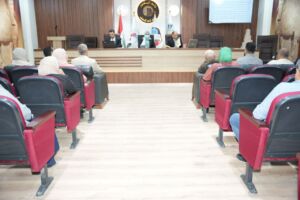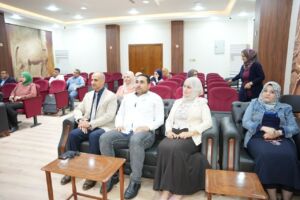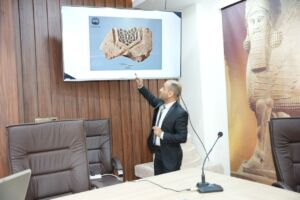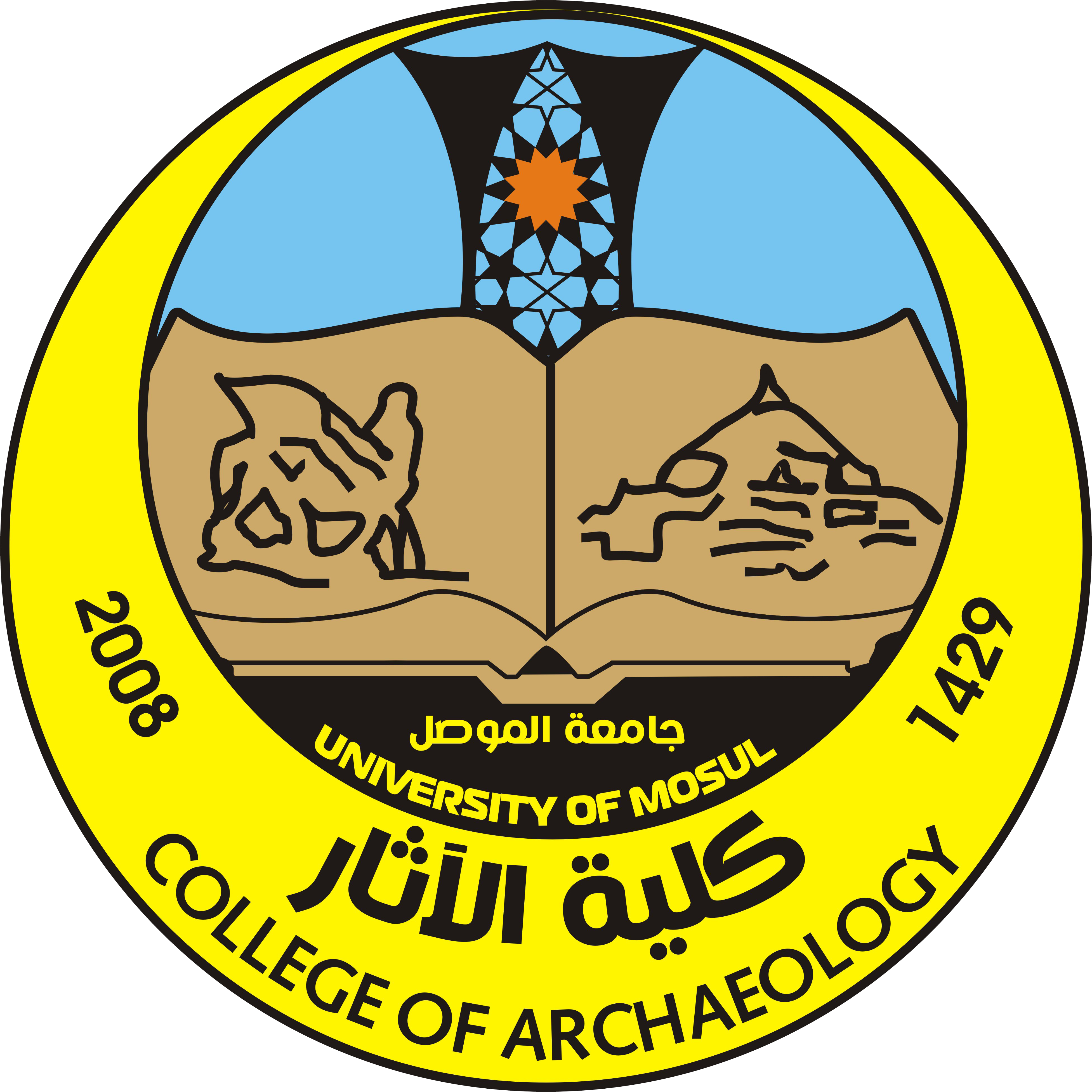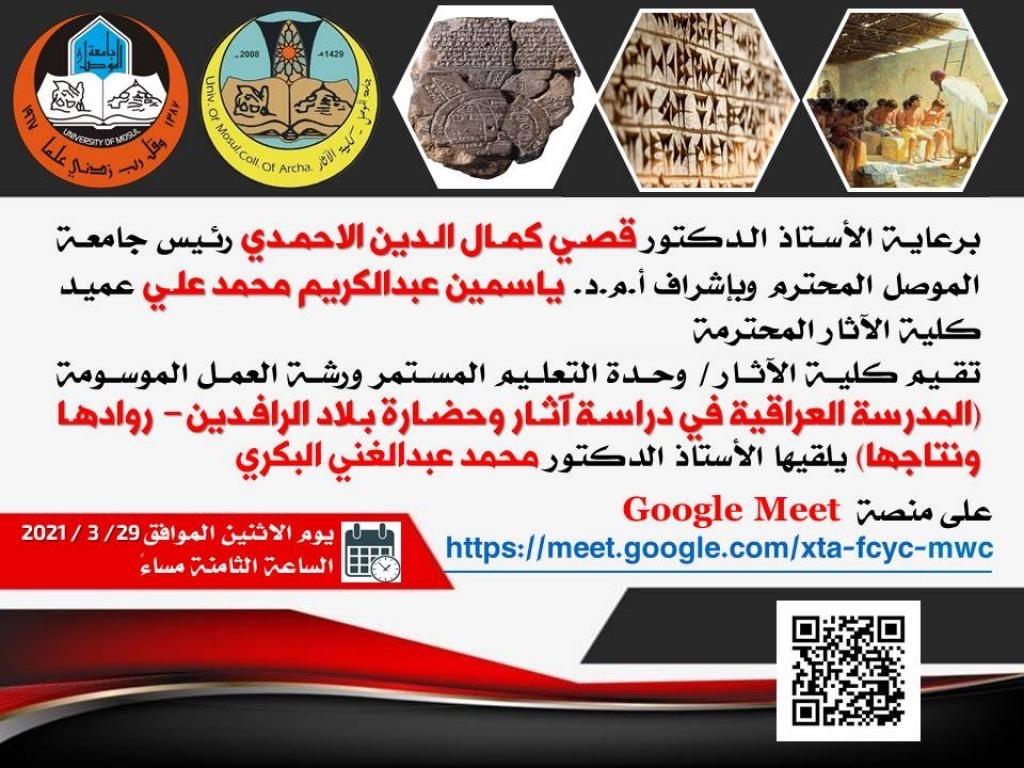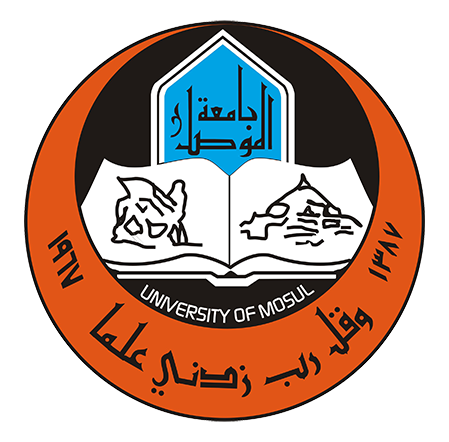5 April، 2024
The Department of Archeology at the College of Archeology held a seminar entitled (Pottery objects from the city of Samarra preserved in the Iraqi Museum_An artistic study_)
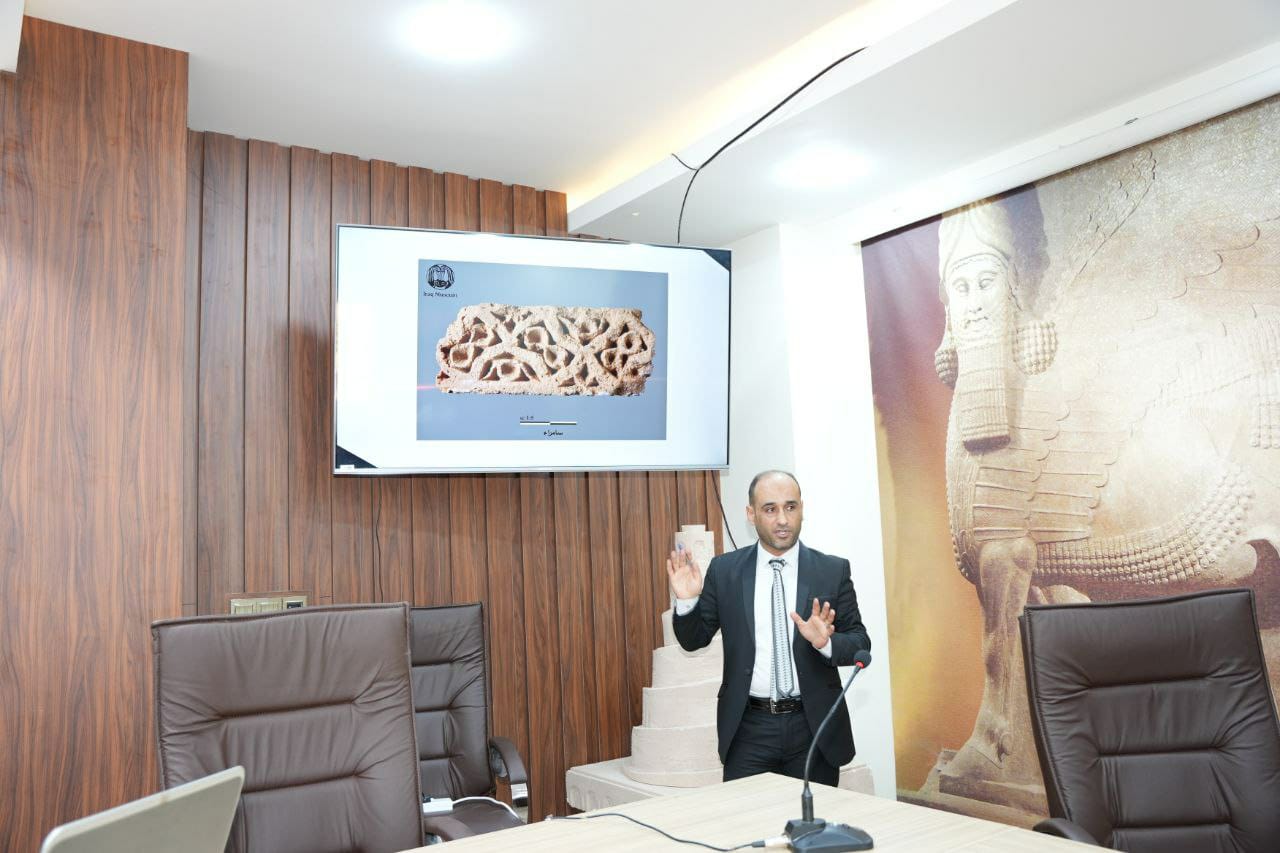
On Wednesday, the 24th of Ramadan 1445 AH
April 3, 2024 AD in the hall of Dr. Behnam Abu Al-Souf at the College of Archeology, delivered by Dr. (Ahmed Ibrahim Ahmed Al-Jubouri). Part of it was attended by Assistant Professor Dr. Yasser Jaber Khalil, Assistant Dean for Scientific Affairs and Head of the Archeology Department, Assistant Professor Dr. Muhammad Muharib Ali, in addition to a group of college staff. The seminar was rich in valuable and new information about applied artistic arts, especially these pieces and their artistic elements.
Note that these pieces are not studied and their number is seven. The study was as follows:
First: A descriptive study of the pieces in terms of their general appearance, the damage inflicted on them, and its causes.
Second: Description of the artistic elements such as plant branches, palm fans and halves, spear-shaped and almond elements, etc., and the manner in which they were created…
Third: Analytical study, including comparison with previous, contemporary and later examples, in addition to consolidating these elements…
Fourth: The method of executing the elements or decorations, if they were by engraving (vertical) or slanting engraving beveled inward, then mentioning the levels in which the decorations were executed, especially since one of them was executed on more than one level, in addition to the artistic features represented by the principle of representational symmetry, succession, alternation, and repetition, as well as the characteristic of the feature. Matching and coordination of technical elements…
Fifth: Study the material from which these pieces are made, as well as the method of manufacturing them in particular. As some know, the use of brick in constructional aspects differs from its use in art. Although in both purposes its material goes through the processes of kneading, shaping, drying, and then braising, its use in the manufacture of decorations requires processes. It is more intensive in terms of purifying it from plankton, getting rid of salts, and then fermenting it than using it in structural aspects…
The study added new and valuable information in this technical specialty due to the lack of studies in it
